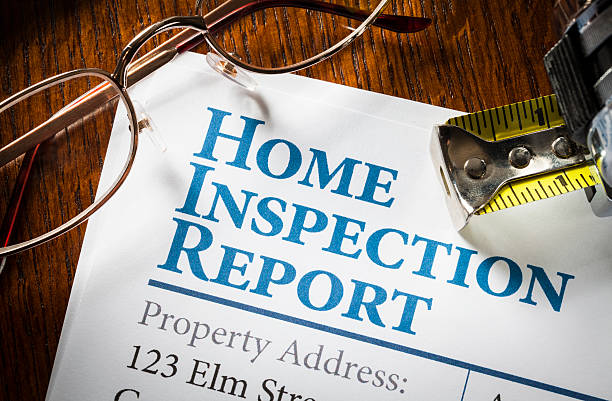Buying your first home is an exciting experience, but it can also be overwhelming. A home inspection is a critical part of the process, ensuring that your dream home doesn’t come with hidden problems. Knowing what to look for can help you avoid expensive repairs down the road. Here’s the ultimate home inspection checklist for first-time buyers to help you stay organized and informed.
1. Exterior Inspection
The outside of the home is just as important as the inside. A thorough exterior inspection ensures the structure is sound and there’s no hidden damage.
Roof
- Check for missing, loose, or damaged shingles.
- Look for signs of leaks or water damage.
- Inspect the gutters and downspouts for proper drainage.
- Check flashing around chimneys and skylights for gaps.
Foundation
- Look for cracks in the foundation walls or floors.
- Inspect for uneven settling or sloping.
- Check for signs of water damage or moisture near the base of the home.
Siding and Exterior Walls
- Look for cracks, peeling paint, or rotting wood.
- Ensure brick or stone walls are intact without large gaps or crumbling mortar.
- Check for proper sealing around windows and doors.
Windows and Doors
- Ensure windows and doors open and close smoothly.
- Check for cracked or broken glass.
- Look for gaps, drafts, or moisture buildup around frames.
Landscaping and Grading
- Check that the ground slopes away from the home to prevent water pooling.
- Ensure trees and shrubs aren’t too close to the home, which could cause damage.
2. Interior Inspection
Now that the exterior is covered, it’s time to focus on the inside. A thorough interior inspection helps you identify any potential issues with the home’s major systems and safety features.
Attic and Insulation
- Check for proper ventilation and insulation.
- Look for signs of water damage or mold.
- Ensure there are no signs of pests or rodents.
Walls, Ceilings, and Floors
- Look for cracks, bulges, or stains on walls and ceilings.
- Check for sagging or sloping floors.
- Inspect for any signs of water damage or mold.
Doors and Windows
- Ensure all doors and windows function properly and lock securely.
- Check for drafts, condensation, or broken seals.
- Look for signs of warping or rot in wooden frames.
Basement or Crawl Space
- Look for signs of water leaks or moisture buildup.
- Check for cracks in foundation walls or floors.
- Ensure proper ventilation and insulation.
Plumbing
- Test all faucets and showers for water pressure and leaks.
- Check under sinks for signs of leaks or water damage.
- Inspect water heaters for age, rust, or leaks.
- Check for proper drainage in toilets and tubs.
- Look for signs of mold or water damage in bathrooms and kitchens.
Electrical System
- Ensure outlets, switches, and light fixtures are functioning.
- Check for any exposed or frayed wiring.
- Confirm that the electrical panel is up-to-date and circuits are labeled.
- Verify that ground-fault circuit interrupters (GFCIs) are installed in wet areas like kitchens and bathrooms.
Heating, Ventilation, and Air Conditioning (HVAC)
- Test the heating and cooling systems for proper operation.
- Check the age and condition of the furnace, air conditioner, or boiler.
- Inspect air ducts for dust buildup or leaks.
- Ensure proper insulation and sealing around HVAC units.
3. Appliance Inspection
While not always included in standard inspections, it’s a good idea to evaluate the condition of any appliances that come with the home.
Kitchen Appliances
- Test the stove, oven, microwave, and dishwasher to ensure they work properly.
- Check for any leaks or loose connections behind the refrigerator and dishwasher.
- Inspect the range hood for proper ventilation.
Laundry
- Inspect the washer and dryer for functionality.
- Check the dryer vent to ensure there’s no blockage or lint buildup.
Water Heater
- Inspect for rust, leaks, or corrosion.
- Ensure the temperature is set to a safe level (between 120-140°F).
4. Safety Features
Safety should always be a priority. Ensure the home’s safety systems are up to code and functioning properly.
Smoke and Carbon Monoxide Detectors
- Test smoke alarms and carbon monoxide detectors in every room.
- Replace old batteries and check expiration dates.
Fire Extinguishers
- Ensure the home has fire extinguishers in easily accessible areas (kitchen, garage, etc.).
Staircases and Railings
- Check for loose or wobbly handrails.
- Ensure stairs are even and free of cracks or damage.
Fireplace and Chimney
- Inspect for cracks, blockages, or buildup in the chimney.
- Ensure the fireplace damper opens and closes properly.
5. Pest and Mold Inspection
Pests and mold can cause major issues if not addressed early. Be sure to include these in your Home Inspection Checklist.
Pest Infestation
- Look for droppings, nests, or damage caused by termites, rodents, or other pests.
- Inspect for carpenter ants, bed bugs, or wood-boring insects in wooden structures.
Mold and Mildew
- Check for musty odors in basements, bathrooms, or attics.
- Look for mold growth on walls, ceilings, and floors.
- Identify water stains that could indicate mold-friendly environments.
6. Additional Testing
In some cases, you may want to opt for additional inspections to ensure the property is completely safe and up to code.
Radon Testing
- Check the home for radon gas, a naturally occurring substance that can be harmful in high concentrations.
Asbestos Testing
- If you’re purchasing an older home, it may contain asbestos materials that need to be properly removed.
Lead Paint Testing
- Homes built before 1978 may have lead paint, which is hazardous and requires remediation.
7. Final Walkthrough Checklist
Before closing, you’ll have one final opportunity to walk through the home and ensure everything is in order. Be sure to:
- Verify that any agreed-upon repairs have been completed.
- Ensure the home’s systems (plumbing, electrical, HVAC) are still in working order.
- Check for any damage that may have occurred since the inspection.
As a first-time homebuyer, having a comprehensive home inspection checklist is crucial for making a sound investment. While some issues might be easy to fix, others can be costly and may influence your decision to move forward with the purchase. Use this checklist to guide inspection you through your home inspection, and don’t hesitate to ask your inspector questions to gain a deeper understanding of the property’s condition. A thorough inspection will give you the peace of mind you need as you take this exciting step toward homeownership.

